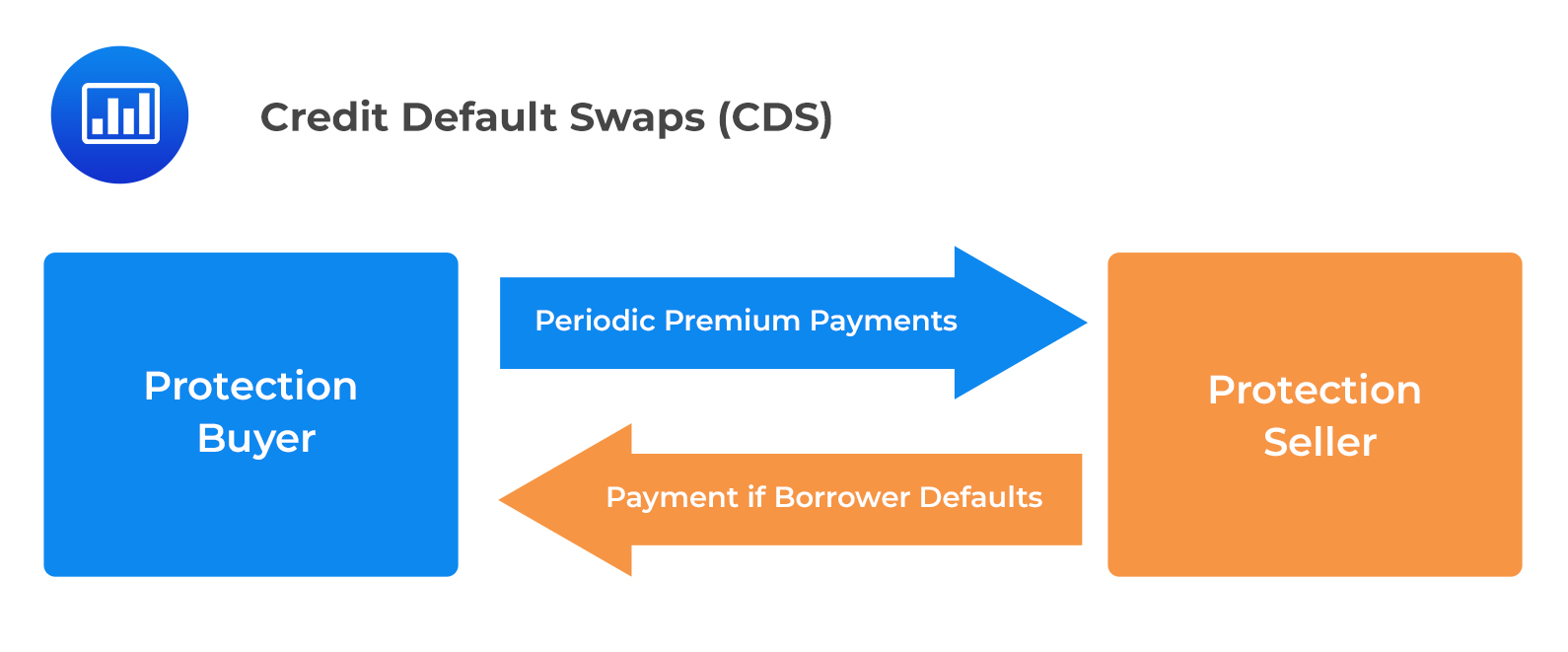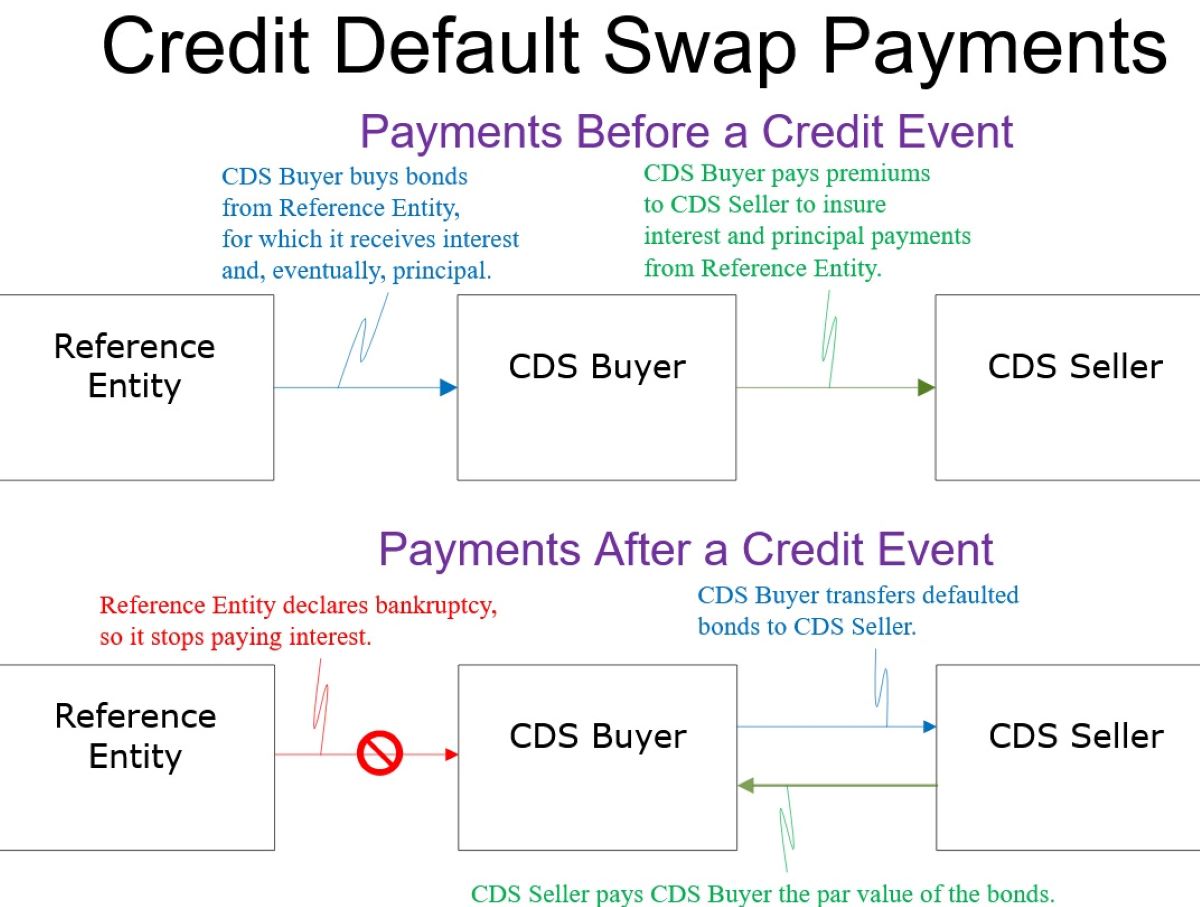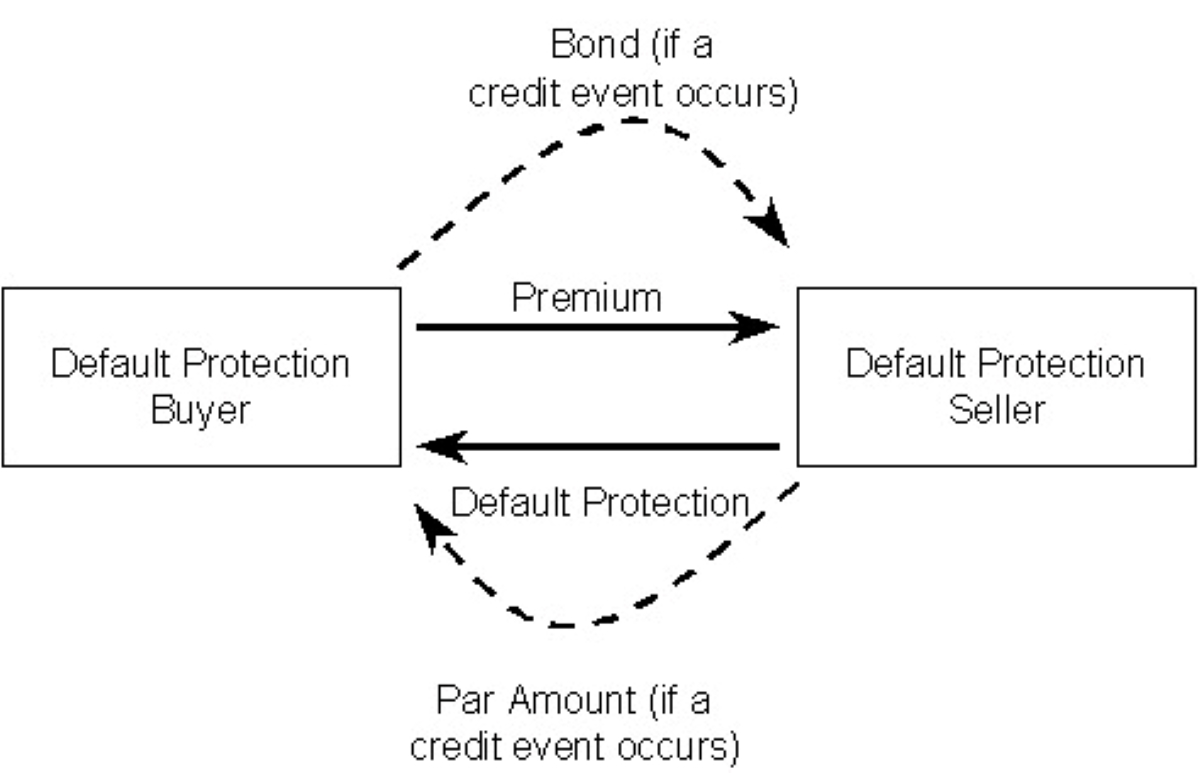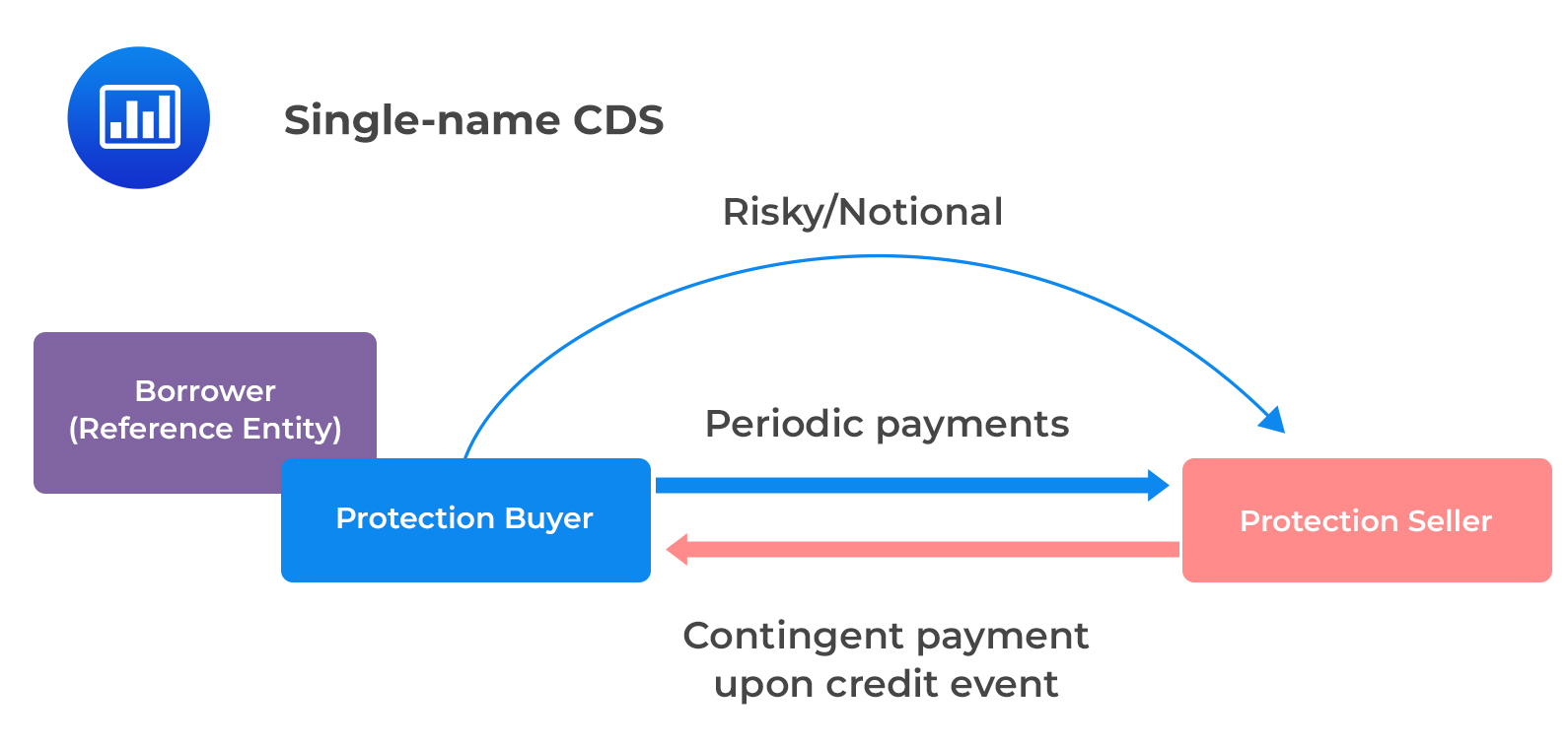Home>Finance>What Happened To The Credit Default Swaps Sold By Rickert
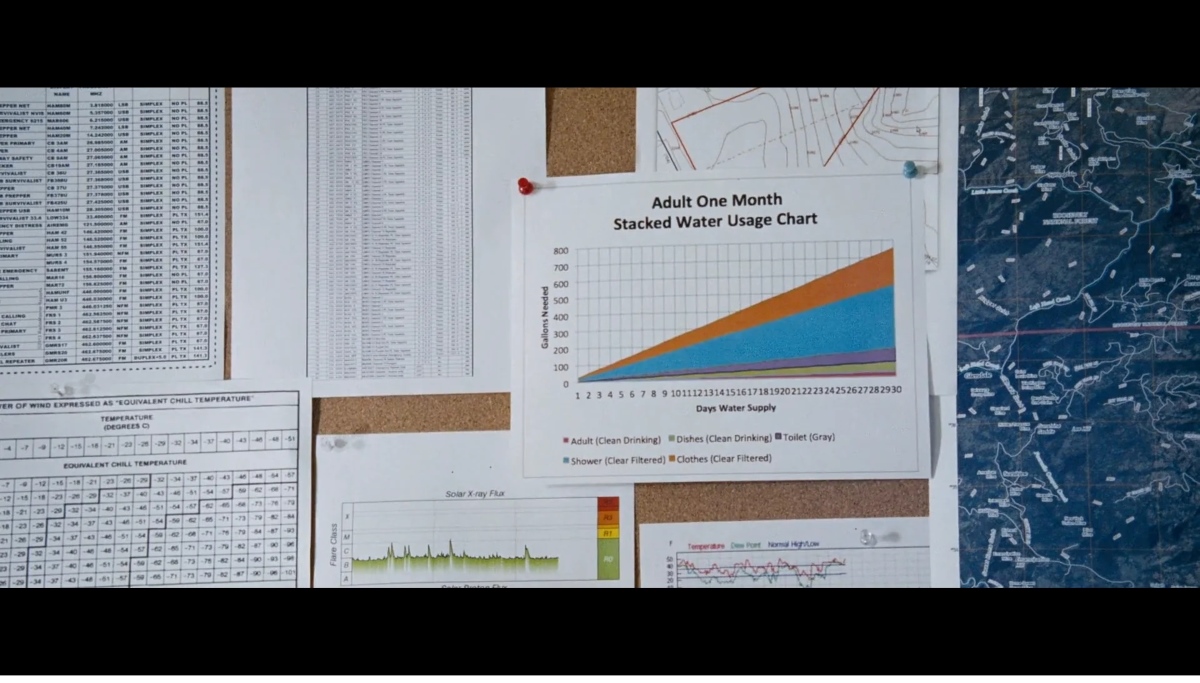

Finance
What Happened To The Credit Default Swaps Sold By Rickert
Published: March 4, 2024
Discover what happened to the credit default swaps sold by Rickert and the impact on the finance industry. Learn about the implications and consequences of these financial instruments.
(Many of the links in this article redirect to a specific reviewed product. Your purchase of these products through affiliate links helps to generate commission for LiveWell, at no extra cost. Learn more)
Table of Contents
Introduction
The world of finance is replete with intricate instruments and mechanisms that underpin the global economy. One such instrument, the credit default swap (CDS), has been the subject of both fascination and controversy in the financial realm. This article delves into the enthralling narrative of Rickert's credit default swaps and the subsequent repercussions that reverberated through the financial landscape.
Credit default swaps are financial derivatives that enable investors to hedge against the risk of default on loans or bonds. They essentially act as insurance policies, providing protection to the buyer in the event of a credit event, such as a default or bankruptcy. The allure of these instruments lies in their potential to generate substantial profits, but their complexity and inherent risks have also made them a source of volatility in the financial markets.
The story of Rickert's credit default swaps is a cautionary tale that sheds light on the complexities and perils associated with these financial instruments. It serves as a poignant reminder of the far-reaching implications that can arise from the misuse or miscalculation of such derivatives. Delving into the details of this narrative offers valuable insights into the inner workings of the financial world and the pivotal role played by credit default swaps.
In the subsequent sections, we will embark on a journey through the background of credit default swaps, unravel the story of Rickert's foray into these instruments, explore the events that led to their collapse, dissect the impact of this debacle, and distill the lessons learned from this compelling saga. Through this exploration, we aim to illuminate the complexities of the financial markets and underscore the importance of prudence and vigilance in navigating the realm of credit default swaps.
Background of Credit Default Swaps
To comprehend the intricacies of the credit default swaps (CDS) saga, it is essential to grasp the fundamental underpinnings of these financial instruments. Credit default swaps are a type of derivative contract that allows investors to mitigate the risk of default on loans or bonds. They are essentially insurance policies that provide protection to the buyer in the event of a credit event, such as a default, restructuring, or bankruptcy of the underlying debt.
The allure of credit default swaps lies in their potential to generate substantial profits for investors. By purchasing CDS contracts, investors can effectively bet on the creditworthiness of a particular entity or the overall market. If the underlying debt instrument experiences a credit event, the seller of the CDS is obligated to compensate the buyer for the loss incurred. This mechanism offers a means of hedging against credit risk and can also serve as a speculative tool for investors seeking to capitalize on fluctuations in credit markets.
However, the complexity and opaqueness of credit default swaps have made them a source of contention and volatility in the financial world. The lack of transparency and standardization in the CDS market has raised concerns about systemic risk and the potential for widespread contagion in the event of a significant credit event. The 2008 financial crisis underscored the perils associated with the proliferation of credit default swaps, as their interconnectedness amplified the impact of the housing market collapse and the ensuing credit crunch.
Regulatory efforts have been undertaken to address the risks posed by credit default swaps, including measures to enhance transparency, standardize trading practices, and mitigate counterparty risk. Despite these initiatives, the allure and complexity of CDS continue to pose challenges for market participants and regulators alike. The story of Rickert’s credit default swaps serves as a poignant illustration of the intricacies and potential pitfalls inherent in these financial instruments.
The Story of Rickert’s Credit Default Swaps
The narrative of Rickert’s credit default swaps unfolds against the backdrop of a fervent pursuit of profits in the financial markets. Rickert, a seasoned investor with a penchant for high-risk ventures, became ensnared in the allure of credit default swaps during a period of exuberant market sentiment. Enticed by the potential for substantial returns, Rickert delved into the realm of CDS with unwavering confidence in his ability to navigate the complexities of these financial instruments.
Rickert’s foray into credit default swaps was marked by a series of bold and speculative maneuvers, as he sought to capitalize on perceived inefficiencies and mispricings in the CDS market. His ventures led him to amass a sizable portfolio of CDS contracts, leveraging his positions in pursuit of outsized gains. Fuelled by a sense of invincibility and a fervent belief in his market acumen, Rickert’s exposure to credit default swaps burgeoned, propelling him into the realm of high-stakes speculation.
As Rickert’s CDS portfolio continued to expand, the underlying risks inherent in these instruments became increasingly pronounced. The intricate web of interconnected credit exposures woven through his CDS positions cast a shadow of vulnerability over his investment endeavors. Despite initial successes and fleeting triumphs, the perils lurking within the CDS market gradually began to manifest, foreshadowing the tumultuous events that would ultimately unfold.
The saga of Rickert’s credit default swaps serves as a cautionary testament to the complexities and pitfalls inherent in the world of high-stakes finance. It encapsulates the allure of financial speculation, the seductive promise of outsized returns, and the sobering realities of risk and consequence. As we delve deeper into the narrative, the intricacies of Rickert’s entanglement with credit default swaps will come to light, offering profound insights into the tumultuous world of high finance and the profound implications of speculative fervor.
The Collapse of Rickert’s Credit Default Swaps
The crescendo of Rickert’s foray into credit default swaps culminated in a tumultuous and harrowing collapse, sending shockwaves through the financial realm. As the intricate web of CDS contracts woven by Rickert unraveled, the vulnerabilities and perils inherent in these derivatives materialized with devastating consequences. The relentless pursuit of profits and the fervent belief in his market prowess had led Rickert down a treacherous path, culminating in a cataclysmic reckoning.
The collapse of Rickert’s credit default swaps was precipitated by a confluence of factors, including the interconnectedness of his CDS positions, the escalating volatility in credit markets, and the unforeseen emergence of widespread credit events. The very instruments that had once held the promise of riches now metamorphosed into harbingers of ruin, as the underlying credit exposures materialized into a maelstrom of losses and liabilities.
As the dominoes tumbled, Rickert found himself ensnared in a quagmire of insurmountable obligations, with the weight of his CDS portfolio bearing down upon him with unrelenting force. The once-vaunted fortress of financial acumen and speculative prowess crumbled in the face of the relentless tide of credit defaults and market turmoil. The collapse of Rickert’s credit default swaps reverberated through the financial ecosystem, serving as a stark reminder of the fragility and interconnectedness of the global financial architecture.
The saga of Rickert’s CDS debacle stands as a cautionary testament to the perils of unchecked speculation and the intricate complexities of financial derivatives. It underscores the profound impact of hubris and unchecked risk-taking in the world of high finance, offering a sobering lesson on the ramifications of overreaching ambition and the seductive allure of outsized returns. The collapse of Rickert’s credit default swaps serves as a poignant reminder of the fragility of financial fortresses built upon speculative fervor and the enduring reverberations of unchecked risk.
Impact and Lessons Learned
The reverberations of Rickert’s credit default swaps debacle cast a long and sobering shadow over the financial landscape, leaving indelible imprints on market participants and regulators alike. The impact of this tumultuous saga extended far beyond the confines of Rickert’s own portfolio, serving as a cautionary parable that resonated throughout the corridors of high finance.
One of the most profound repercussions of Rickert’s CDS collapse was the awakening of a heightened awareness regarding the complexities and risks associated with financial derivatives. Market participants and investors were compelled to reassess their approaches to risk management and speculative endeavors, recognizing the perils of unchecked exposure to intricate and opaque instruments such as credit default swaps.
Regulators and policymakers were spurred into action, redoubling their efforts to enhance transparency, mitigate systemic risk, and fortify the resilience of the financial system. The saga of Rickert’s credit default swaps served as a rallying cry for more robust oversight and prudential safeguards, prompting a reevaluation of regulatory frameworks and risk assessment practices.
Lessons learned from Rickert’s CDS debacle permeated the collective consciousness of the financial community, instilling a newfound sense of vigilance and circumspection in the realm of speculative finance. The allure of outsized returns and the siren song of financial speculation were juxtaposed against the sobering realities of risk and consequence, prompting a recalibration of risk appetite and investment strategies.
The enduring legacy of Rickert’s credit default swaps saga lies in its capacity to engender a paradigm shift in the approach to risk management and speculative fervor. The tumultuous collapse of his CDS portfolio served as a crucible of introspection, fostering a collective recognition of the imperative to exercise prudence, diligence, and restraint in navigating the intricate terrain of financial derivatives.
Conclusion
The saga of Rickert’s credit default swaps stands as a compelling testament to the intricate complexities and profound perils inherent in the world of high-stakes finance. It serves as a cautionary parable, illuminating the seductive allure of financial speculation, the perilous implications of unchecked risk-taking, and the enduring reverberations of hubris and unchecked ambition.
Through the tumultuous narrative of Rickert’s foray into credit default swaps, we have gleaned invaluable insights into the intricate dynamics of financial derivatives and the profound impact of speculative fervor. The collapse of his CDS portfolio reverberated through the financial ecosystem, leaving an indelible imprint on market participants, regulators, and investors alike.
As we reflect on the profound lessons distilled from Rickert’s CDS debacle, we are reminded of the imperative to exercise prudence, vigilance, and circumspection in navigating the complex terrain of financial derivatives. The enduring legacy of this saga lies in its capacity to foster a paradigm shift in the approach to risk management and speculative endeavors, instilling a newfound sense of awareness and resilience in the financial community.
Ultimately, the narrative of Rickert’s credit default swaps serves as a poignant reminder of the enduring interplay between risk and consequence in the realm of high finance. It underscores the imperative to temper ambition with prudence, to navigate the allure of speculative fervor with circumspection, and to recognize the enduring reverberations of unchecked risk-taking.
As we chart the course ahead, the saga of Rickert’s credit default swaps stands as a testament to the enduring imperative of prudence, vigilance, and resilience in the intricate tapestry of the financial world. It beckons us to heed the lessons learned, to navigate the complexities of financial derivatives with sobriety and diligence, and to forge a path forward guided by the enduring wisdom distilled from this compelling narrative.


